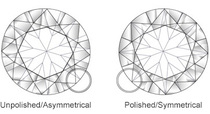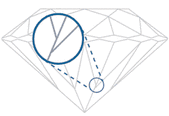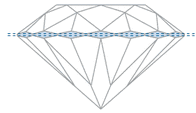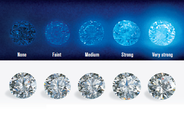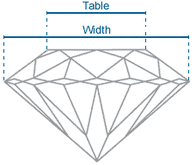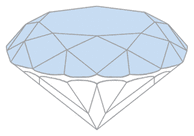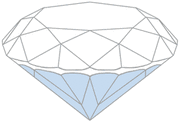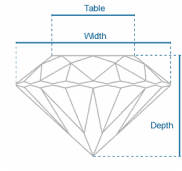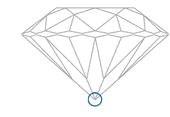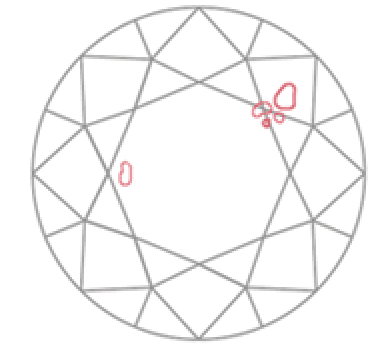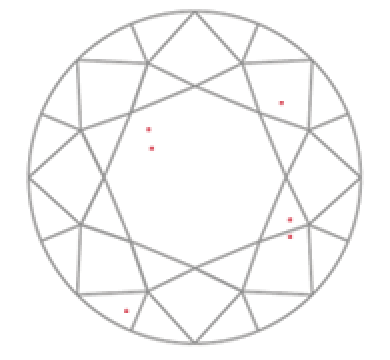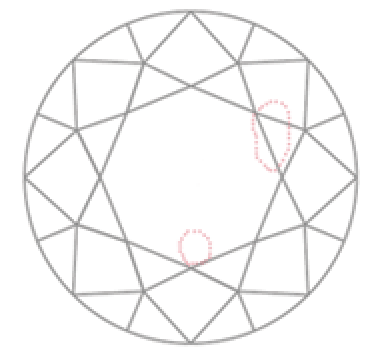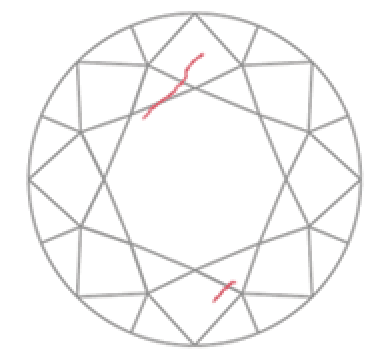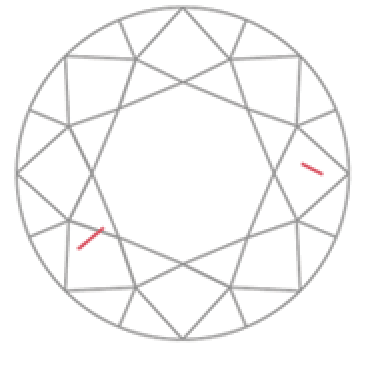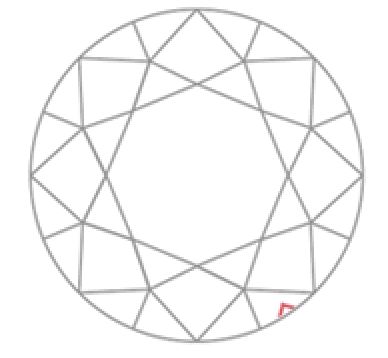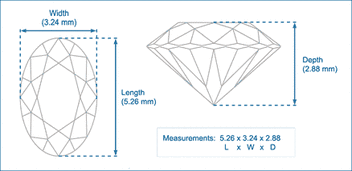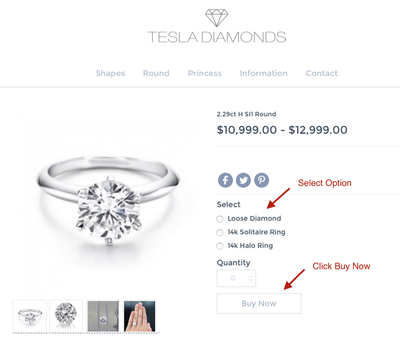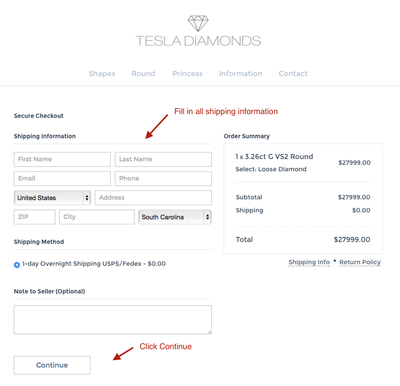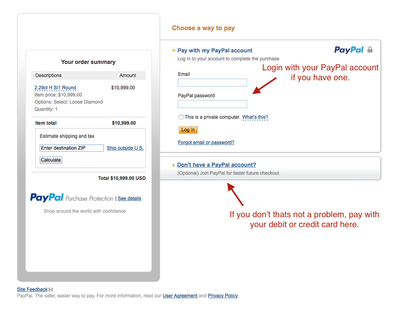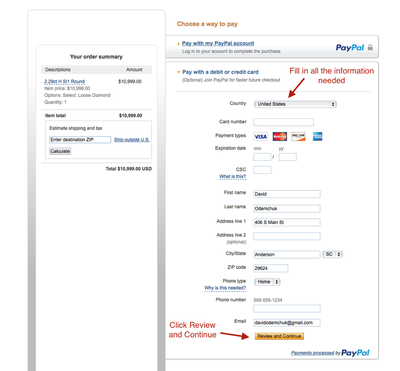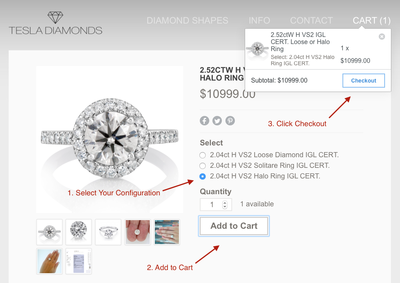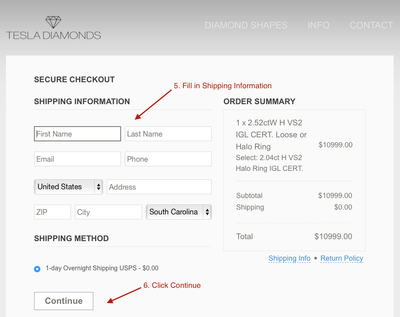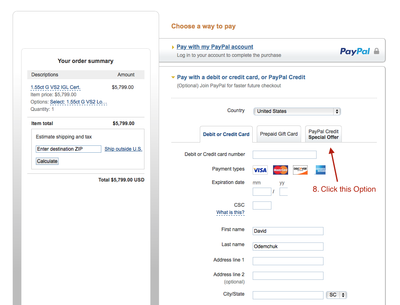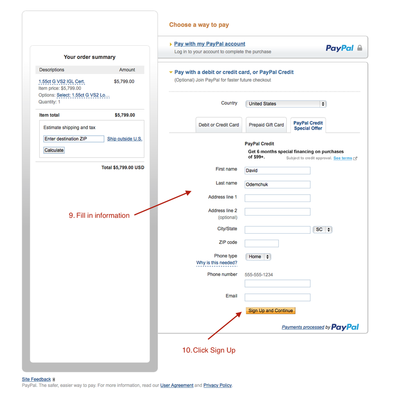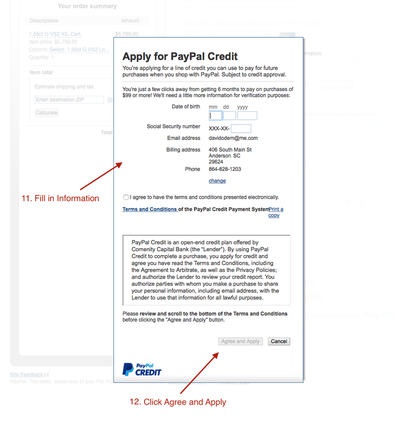Diamond Related Questions
What are Diamonds?
Everything is made of something, but when it comes to the toughest and hardest material on Earth –natural diamonds are over 50x more durable than any other on this vast planet. When carbon atoms deep below the Earth’s surface reach immense temperatures and pressure, they form these beautiful and precious stones which are then unearthed, mined, and ultimately cut and treated so we can all enjoy their fullest potential. Just like the love you share with your special someone, diamonds are meant to last forever. In our opinion, relationships can also experience immense pressure and rising temperatures during formation stages, and we believe that is what all healthy relationships consist of. That is exactly why a diamond is typically the result of those who can make it through everything together –as a reward and seal of great accomplishment. Almost all diamonds on this earth have a faint yellow or gold tint to them, and the “colorless” diamonds that we all see commonly in advertisements are just a small fraction of all the diamonds in the world. Because of its transparency, composition pureness, and natural color –no other stone shares the same sparkle that a diamond is capable of generating. Diamonds are obviously very rare, and the average yield when it comes to diamond mining is: 1 part diamond to 1 million part rock. As you can see, a diamond is in so many ways like your significant loved one. No two diamonds are ever the same, and finding the one for you is certainly not a draw from a hat. That is why we have made the selection process for you so easy and comfortable, -your 1 in a million is right here at Tesla Diamonds.
What is a Diamond's Carat?
A diamond's size (carat) is indicated by its weight, and the weight is indicated in carats: one carat equals 1/5 of a gram. The word carat is often abbreviated as ct. If a diamond weighs less than one carat, its weight is indicated in points (1/100 of a carat). Therefore, a half-carat stone weighs 50 points, while a 75 point diamond is 3/4 of a carat. If a diamond weighs more than one carat, its weight is expressed in carats and decimals. Therefore, a 1.07 ct. stone weighs one carat and 7 points. The price of a diamond tends to jump when its carat weight crosses 50 points, 75 points or 1 carat. The price difference between a diamond that weighs 49 points and one that weighs 50 points is often greater than the price difference between one weighing 48 and 49 points. The larger a diamond, the more rare it is. Therefore, as carat weight increases, so does the price per carat. A 2-ct. stone, for example, will be more than twice that of a 1-ct. stone, assuming they are similar in cut, clarity and color.
What is a Diamond's Clarity?
Because diamonds are formed deep within the earth, under extreme heat and pressure, they often contain unique birthmarks, either internal (inclusions) or external (blemishes). Like most things in life, diamonds are rarely perfect. As a diamond forms, tiny crystals may get trapped inside it, or the stone may have irregularities on its surface. Clarity refers to the relative absence of such flaws. The harder it is to see the flaws, the more rare the diamond. Gemologists will look for two kinds of flaws, or clarity characteristics, in your diamond: inclusions, which are flaws enclosed inside or primarily inside the diamond, and blemishes, which are nicks and scratches on the stones surface. If the inclusions or blemishes can be seen with the naked eye, the diamond will score the lowest on the clarity scale. The more magnification necessary to see the clarity characteristics, the more valuable the diamond. Don't feel bad if your diamond does not have perfect clarity. Truly flawless diamonds are so rare that many gemologists never see one throughout their entire career.
Also learn about clarity enhanced diamonds here. Enhanced Diamonds
Also learn about clarity enhanced diamonds here. Enhanced Diamonds
What is a Diamond's Color?
Diamond color is all about what you can't see. Diamonds are valued by how closely they approach colorlessness – the less color, the higher their value. (The exception to this is fancy-color diamonds, such as pinks and blues, which lie outside this color range.) It may appear that your diamond is colorless, but in fact, it probably has tinges of yellow or brown. A diamond's color refers to how noticeable its tints are. The more noticeable the color, the lower its value the less noticeable the color, the more rare it is and the higher its value. There is an exception to this rule: If your diamond has tints of a color other than yellow or brown - for example, if it is blue, purple or red - it is considered to be fancy-colored, and is graded differently. Assuming your diamond is in the yellow/brown color range, trained gemologists will grade it based on a finely calibrated scale that compares it to a master set.
What is a Diamond's Cut?
Diamond color is all about what you can't see. Diamonds are valued by how closely they approach colorlessness – the less color, the higher their value. (The exception to this is fancy-color diamonds, such as pinks and blues, which lie outside this color range.) It may appear that your diamond is colorless, but in fact, it probably has tinges of yellow or brown. A diamond's color refers to how noticeable its tints are. The more noticeable the color, the lower its value the less noticeable the color, the more rare it is and the higher its value. There is an exception to this rule: If your diamond has tints of a color other than yellow or brown - for example, if it is blue, purple or red - it is considered to be fancy-colored, and is graded differently. Assuming your diamond is in the yellow/brown color range, trained gemologists will grade it based on a finely calibrated scale that compares it to a master set.
What is a diamond's Polish?
What is a Diamond's Symmetry?
What is a Diamond's Fluorescence?
What is a Diamond's Table?
What is a Diamond's Crown?
What is a Diamond's PAVILION?
WHAT IS A DIAMOND'S Total Depth?
What is a Diamond's Culet?
What is a Diamond Facet?
A facet is a flat polished surface on any side of a diamond. A brilliant cut diamond will have 58 facets (including the culet). A facet is created during the cutting of a rough diamond, and is polished to a glassy smoothness.
What are the Different Types of diamond Imperfections?
|
There are many Diamond Imperfections. Some are more visible then others.
Crystal: Mineral deposit found inside the diamond. Pinpoint: Very small crystal, often whitish. Cloud: Tight grouping of pinpoint inclusions. Feather: Fracture that often has fine lines. Needle: Very fine, elongated inclusion. Chip: Shallow nick in the surface of the diamond. |
WHAT IS A DIAMOND'S MEASUREMENTS?
What is a Diamond's Shape?
There are ten common diamond shapes (Round, Princess, Oval, Marquise, Pear, Cushion, Emerald, Asscher, Radiant, Heart). Round is by far the most popular, representing about 75% of all diamonds sold. Princess has gained in popularity in recent years and is the most popular fancy (non-round) shape.
Tesla Diamond Related Questions
About Tesla Diamonds?
Tesla Diamonds will hand-select every diamond individually from its distributors and then determine the appropriate value after a certified appraisal is issued. We pride ourselves by offering our consumers the best possible value at the best price available in today’s competitive marketplace.
How to tell if a diamond is REAL?
There are many ways to tell if a diamond is real or not. The most common way is with a diamond tester, which measurers the hardness of the diamond. If the diamond is real, the diamond tester will read 10+ on hardness (as it's the hardest material on the earth). Another way would be by looking under a scope and finding imperfections, as all real diamonds will have them. Therefore, if you see black spots or white lines, it is most likely real.
What is Clarity Enhanced (enhanced) mean?
New detailed description here
Clarity Enhanced diamonds are 100% natural earth-mined diamonds like all other natural diamonds. However after the diamond is cut and polished from its rough state, the diamond then undergoes another process - clarity enhancement. There are two different types of enhanced diamonds: "Laser drilled" and "Laser Filled". The laser process cleans out some of the visible inclusions while filled diamonds take it one step further and fill the inclusions making them more transparent and durable. Both processes are guaranteed for life, as they do not interfere with the integrity of the diamond and the beauty of it all is that you buy the diamond for its original state cost. That's why with Clarity Enhanced diamonds (enhanced) you get the same great stone at 30-50% off. Check out the video below.
Clarity Enhanced diamonds are 100% natural earth-mined diamonds like all other natural diamonds. However after the diamond is cut and polished from its rough state, the diamond then undergoes another process - clarity enhancement. There are two different types of enhanced diamonds: "Laser drilled" and "Laser Filled". The laser process cleans out some of the visible inclusions while filled diamonds take it one step further and fill the inclusions making them more transparent and durable. Both processes are guaranteed for life, as they do not interfere with the integrity of the diamond and the beauty of it all is that you buy the diamond for its original state cost. That's why with Clarity Enhanced diamonds (enhanced) you get the same great stone at 30-50% off. Check out the video below.
What is a Carat?
A diamond's size is indicated by its weight, and the weight is indicated in carats: one carat equals 1/5 of a gram. The word carat is often abbreviated as ct. If a diamond weighs less than one carat, its weight is indicated in points (1/100 of a carat). Therefore, a half-carat stone weighs 50 points, while a 75 point diamond is 3/4 of a carat. If a diamond weighs more than one carat, its weight is expressed in carats and decimals. Therefore, a 1.07 ct. stone weighs one carat and 7 points. The price of a diamond tends to jump when its carat weight crosses 50 points, 75 points or 1 carat. The price difference between a diamond that weighs 49 points and one that weighs 50 points is often greater than the price difference between one weighing 48 and 49 points. The larger a diamond, the more rare it is. Therefore, as carat weight increases, so does the price per carat. A 2-ct. stone, for example, will be more than twice that of a 1-ct. stone, assuming they are similar in cut, clarity and color.
What does Clarity stand for in a diamond?
Because diamonds are formed deep within the earth, under extreme heat and pressure, they often contain unique birthmarks, either internal (inclusions) or external (blemishes). Like most things in life, diamonds are rarely perfect. As a diamond forms, tiny crystals may get trapped inside it, or the stone may have irregularities on its surface. Clarity refers to the relative absence of such flaws. The harder it is to see the flaws, the more rare the diamond. Gemologists will look for two kinds of flaws, or clarity characteristics, in your diamond: inclusions, which are flaws enclosed inside or primarily inside the diamond, and blemishes, which are nicks and scratches on the stones surface. If the inclusions or blemishes can be seen with the naked eye, the diamond will score the lowest on the clarity scale. The more magnification necessary to see the clarity characteristics, the more valuable the diamond. Don't feel bad if your diamond does not have perfect clarity. Truly flawless diamonds are so rare that many gemologists never see one throughout their entire career.
What does Color stand for in a diamond?
Diamond color is all about what you can't see. Diamonds are valued by how closely they approach colorlessness – the less color, the higher their value. (The exception to this is fancy-color diamonds, such as pinks and blues, which lie outside this color range.) It may appear that your diamond is colorless, but in fact, it probably has tinges of yellow or brown. A diamond's color refers to how noticeable its tints are. The more noticeable the color, the lower its value the less noticeable the color, the more rare it is and the higher its value. There is an exception to this rule: If your diamond has tints of a color other than yellow or brown - for example, if it is blue, purple or red - it is considered to be fancy-colored, and is graded differently. Assuming your diamond is in the yellow/brown color range, trained gemologists will grade it based on a finely calibrated scale that compares it to a master set.
Is a diamond Cut important?
Cut is the factor that fuels a diamonds fire, sparkle and brilliance. An important aspect of the allure of diamonds is the way they sparkle. The sparkle is a result of how a stone is cut - its symmetry, polish, durability, and proportion of its parts - which, in turn, determines how light travels through the stone and back to your eye. Ideally, after light hits the top of a diamond, it travels through the stone and then out the top again, creating the sparkle effect. This sparkle depends on the proportions between the diamonds table size, crown angle and pavilion depth. Many combinations can achieve the same level of sparkle. However, it is most important how these factors work together in your particular stone to create maximum brightness. For example, if a stone's pavilion is cut too shallow or too deep relative to its crown, light might seep from the side or bottom of the stone, thereby reducing the sparkle. Gemologists will study three light effects in your diamond when determining the quality of its cut: brightness, the combination of all white light reflecting from the stone fire, the diamond's colored flashes and scintillation, the overall pattern of bright and dark areas when the diamond is moved.
What does Eye-Clean mean?
Eye-Clean refers to a diamond that has no inclusions or blemishes visible to a naked eye.
What does a Solitaire Ring mean?
Solitaire is a simple diamond ring with just the center diamond on top.
What is an Appraisal?
Appraisal is a written estimate of the approximate retail replacement value of an item described. They can be used for insurance purposes and should be updated every 5 years.
What is Laser Inscription?
In order to verify which certificate is associated with wich stone, the certificate number can be inscribed on the girdle of each diamond. For an additional fee, IGL Laboratories can also inscribe company names or personal messages on the stone’s girdle. Also IGA is a sister branch of IGL.
How to get jewelry insurance?
We currently do not offer insurance from Tesla Diamonds but we do recommend using a third party like lavalier.com





